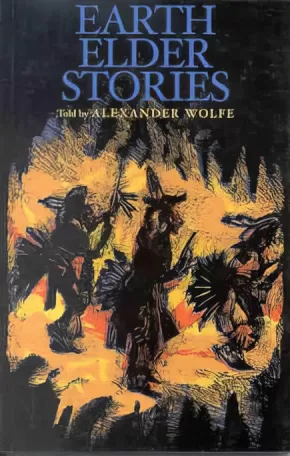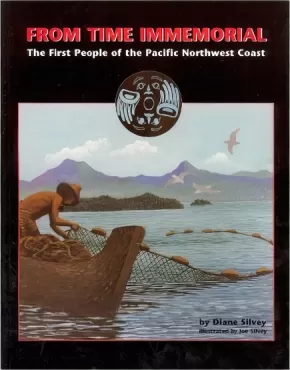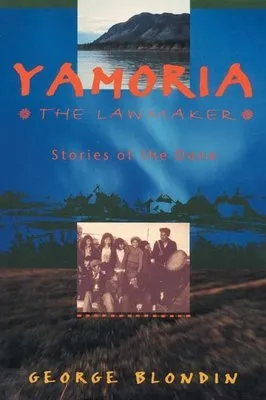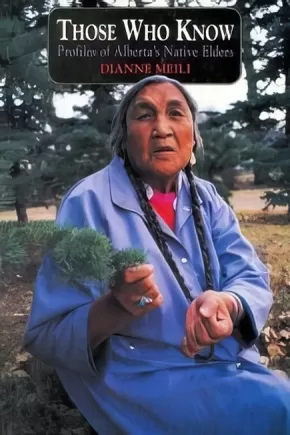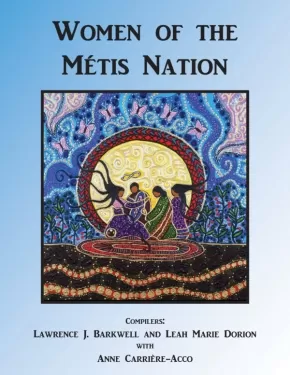
Social Studies
271
-
279
of
279 Results;
Sort By
Go To
of 19
The Truth About Stories: A Native Narrative
$19.99
Format:
Paperback
Text Content Territories:
Indigenous American; Indigenous Canadian;
ISBN / Barcode: 9780887846960
Synopsis:
Synopsis:
"Stories are wondrous things," award-winning author and scholar Thomas King declares in his 2003 CBC Massey Lectures. "And they are dangerous." In his 2003 Massey lectures, award-winning author and scholar Thomas King looks at the breadth and depth of Native experience and imagination.
Beginning with a traditional Native oral story, King weaves his way through literature and history, religion and politics, popular culture and social protest, gracefully elucidating North America's relationship with its Native peoples.
Native culture has deep ties to storytelling, and yet no other North American culture has been the subject of more erroneous stories. The Indian of fact, as King says, bears little resemblance to the literary Indian, the dying Indian, the construct so powerfully and often destructively projected by White North America. With keen perception and wit, King illustrates that stories are the key to, and only hope for, human understanding. He compels us to listen well.
Reviews
"Trust a novelist and English professor to get to the heart of how stories and storytelling shape our perceptions. This is a wonderful study of the power of words." — Booklist
"A collection of thought-provoking essays examining the importance of the oral tradition. Storyteller Thomas King addresses Native cultural concerns and their primal link to storytelling. Intriguing and entertaining. Highly recommended for all tribal college collections and literature classes."— Tribal College Journal
"What is revealed in this graceful, even seductive book of essays about storytelling by the esteemed Cherokee novelist, radio personality, university professor, and Canadian émigré is that what is as important as the stories we tell about the world are the ways in which we interpret those stories." — World Literature in Review
"King’s addresses artfully combine literary and cultural criticism, traditional Native American stories, and personal experience." — The Bloomsbury Review
Educator Information
Essay series that is a study of First Peoples' storytelling in North America.
Grades 10-12 English First Peoples Resource for various units.
Curriculum Connections: English, Indigenous Studies, Civics and Careers, History, Humanities and Social Sciences.
Additional Information
208 pages | 5.08" x 8.00"
Earth Elder Stories
$14.95
Format:
Paperback
Text Content Territories:
Indigenous Canadian; First Nations; Anishinaabeg; Ojibway; Saulteaux;
ISBN / Barcode: 9780920079355
Synopsis:
Synopsis:
Alexander Wolfe is a Saulteaux/Ojibwa storyteller and the keeper of his family's oral history. These stories belong to his family and include accounts of how the descendents of Pinayzitt, a Saulteaux leader who lived in the Northwest Territories of Canada and the Great Plains of the United States in the 1800s, lived on the land, survived the smallpox and flu epidemics, signed treaties, and were confined to reservations.
The stories blend history with legend and prophecy, giving both the equal weight they occupy in Native oral tradition. In their retelling, Wolfe carries out his responsibility of passing on his family's stories to the next generation, as well as encouraging Natives to record their histories and non-Natives to understand the significance and lessons of these tales.
Earth Elder Stories has proven an excellent resource for students of Native Studies, history, linguistics, and literature.
From Time Immemorial: The First Peoples of the Northwest Coast (7 in Stock)
$29.95
Artists:
Format:
Paperback
Text Content Territories:
Indigenous Canadian; First Nations;
ISBN / Barcode: n/a
Synopsis:
Synopsis:
From Time Immemorial provides an honest and up-to-date survey of the history of the coastal First Nations from pre-contact to the present. The culture of the coastal people was highly complex. Although there were many similarities, there were also many differences among the groups who shared the wealth of their life-sustaining environment.
This book provides a broad overview of traditional ways common to a large number of diverse groups. It encourages readers to learn more about particular groups who, long ago, walked the shorelines and forest trails of the Pacific Northwest.
Educator Information
From Time Immemorial has been recommended by the First Nations Education Steering Committee of BC as an “authentic First Peoples text that meets provincial standards and reflects First Peoples knowledge and perspectives in a respective way.”
It has also been recommended by Literacy BC: “It’s easy to see why this text, which is accessible for fundamental level students, was also awarded the British Columbia 2000 Book Award.” Jan Weiten notes, “[This] is such an ambitious project. Both Diane and Joe Silvey have honoured the spirit and history of First Nations people, and they should be proud of themselves. This is definitely an asset to any classroom.”
From Time Immemorial meets or exceeds all of the Learning Standards for the new BC Grade 3 Social Studies curriculum and the First Nations content for grades 4-8:
- Learning about indigenous peoples nurtures multicultural awareness and respect for diversity
- People from diverse cultures and societies share some common experiences and aspects of life.
- Indigenous knowledge is passed down through oral history, traditions, and collective memory.
- Indigenous societies throughout the world value the well-being of the self, the land, spirits, and ancestors.
Recommended Grades: 3-8.
A teacher's guide for this book was available, but is now out of print: From Time Immemorial Teacher's Guide
This resource is also available in French: De Temps Immemorial: Les Premiers Habitants de la Côte Nord-Ouest du Pacifique. A French Teacher's Guide is also available here: Guide de la'enseignant(e) De Temps Immemorial.
Additional Information
92 pages | colour illustrations, photos, and maps
The Beothuk of Newfoundland A Vanished People
$14.95
Format:
Paperback
Text Content Territories:
Indigenous Canadian; First Nations; Beothuk;
ISBN / Barcode: 9780920911181
Synopsis:
Synopsis:
A wonderful history of the Red Indians of Newfoundland. Exciting in its detail, this book shares all available information concerning every aspect of Beothuk life-housing, clothing, hunting methods, arts and social life. Ingeborg Marshall gives us a rare picture of a lost people whose culture was completely destroyed after the arrival of white settlers.
Feathers and Fools (4 in Stock) - ON SALE
$8.80 $10.99
Artists:
Format:
Paperback
ISBN / Barcode: 9780152023652
Synopsis:
Synopsis:
Feathers and Fools is an allegory about how wars can begin with a simple fear of others based on misconceptions. For some time the swans and peacocks have lived peacefully by a pond. One day the peacocks begin to contemplate the differences between themselves and their neighbours. This then leads to the fear that the swans may one day change the peacock's way of life. With this fear fully ingrained in their minds, they begin to build arms against their neighbours. "We shall hurl these arrows at their throats and slaughter everyone should they ever try to change our way of life."
Upon hearing this, the swans began to build arms against the peacocks in fear that they would be attacked. The fear grew as each group acquired more and more arms against each other. The peacocks soon mistook the action of a swan as an act of aggression and thus, a war began. "Soon cries filled the sir and blood darkened the earth." When all the feathers had settled, there were no birds to be found, both swans and peacocks had been destroyed.
Fox's antiwar story touches on a common issue many nations face and how humans handle the concept of war. As history has revealed, humans have begun wars oftentimes with very little knowledge of their opponents on the battlefield. The author artfully displays how mankind, although similar in many ways can decimate each other because of our lack of knowledge of the similarities amongst all groups. At the end of the story, Fox gives us a hopeful ending with the hatching of a lone peacock and a lone swan. These young birds meet and notice how similar they are and soon become friends. "So off they went together, in peace and unafraid, to face the day and share the world." Fox recognizes that present and future generations hold the keys to ending war.
The main characters, swans and peacocks are interchangeable with any nation, country, or people who have endured wars and their aftermaths. The book also emphasizes the importance of learning from history and not repeating it. Illustrator Nicholas Wiltons paintings bring out the beauty of the worlds of the peacock and swan. With acrylic jewel tone paints, he captures the beauty of the peacocks bright feathers and the swans graceful profile. As the story progresses, you can see the changes of the birds body language and actions helping bring emphasis on how the building toward war changes reactions and opinions of the two sides. The paintings were created to evoke the feeling of a folktale or fable with its aged looks and block style borders. Feathers and Fools is a wonderful book that could open the possibility for the discussion of topics such as war, the arms race, and similarities amongst people and their ways of lives. This book could be used at all levels for discussion.
Educator Information
This resource is also available in French: Plumes et prises de bec
Additional Information
36 pages | 11.00" x 8.50"
Yamoria the Lawmaker: Stories of the Dene
$24.95
Format:
Paperback
Text Content Territories:
Indigenous Canadian; First Nations; Dene;
Reading Level: N/A
ISBN / Barcode: 9781896300207
Synopsis:
Synopsis:
Dene Elder George Blondin creates a spiritual guidebook that weaves together oral stories with the recounting of how the northern Canadian Dene came to depend on the European fur traders. The result is a magical journey for readers of any heritage.
Additional Information
240 pages | 6.00" x 9.00" | Paperback
Contact and Conflict: Indian-European Relation in British Columbia, 1774-1890
$46.95
Format:
Paperback
Text Content Territories:
Indigenous Canadian;
Grade Levels: 12; University/College;
ISBN / Barcode: 9780774804004
Synopsis:
Synopsis:
Originally published in 1977, and reprinted several times since, Contact and Conflict remains an invaluable account of the profound impact that white settlement had on Native-European relations in British Columbia after the fur trade ended. Robin Fisher argues that the fur trade had a limited effect on the cultures of Native people. Both Natives and Europeans were involved in a mutually beneficial economic system, and there was no incentive for non-Native fur traders to alter radically the Native social system. With the passing of the fur trade in 1858, however, and the beginning of white settlement, what has been a reciprocal system between the two civilizations became a pattern of white dominance.
The second edition includes a preface in which the author re-examines his original arguments, surveys the literature since 1977, and comments on directions for new research. The original edition of the book was published at a time when there was relatively little written by historians on the subject. Today, Contact and Conflict is still widely used by scholars and students, and its arguments have endured, yielding new insights into the role of Native people in the history of British Columbia.
Those Who Know: Profiles of Alberta's Native Elders
$24.95
Format:
Paperback
Text Content Territories:
Indigenous Canadian;
ISBN / Barcode: 9780920897034
Synopsis:
Synopsis:
The reader will experience first-hand the personality, characteristics, and sometimes remote environment of these healers, visionaries, storytellers, and spiritualists through Dianne Meili's faithful re-telling of the interviews she conducted with each during the two years she spent traveling throughout Alberta.
Suggested Grades: 10-12
ABPBC
Women of the Métis Nation
$30.00
Editors:
Text Content Territories:
Indigenous Canadian; Métis;
Reading Level: N/A
ISBN / Barcode: n/a
Synopsis:
Synopsis:
Métis Women are the heart and soul of the Métis people. Without them, there would be no Métis Nation. They are the strength behind our families, communities, and places of work. In the past, their kinship networks established where people settled and whom people married. Sovereign within their familial and community roles, they were the healers, the stewards of the land and its resources, the keepers of Indigenous knowledge, and the midwives who kept the Métis Nation nurtured, educated, and sustained. This tradition has continued into the present as Métis women have moved past their domestic and familial spheres into areas such as social advocacy, the arts, sports, law, post-secondary education, and entrepreneurship. Containing hundreds of biographies, Women of the Métis Nation is an ambitious role model book that documents more than 200 years of trailblazing Métis women.
Additional Information
235 Pages | Nonfiction
Sort By
Go To
of 19




